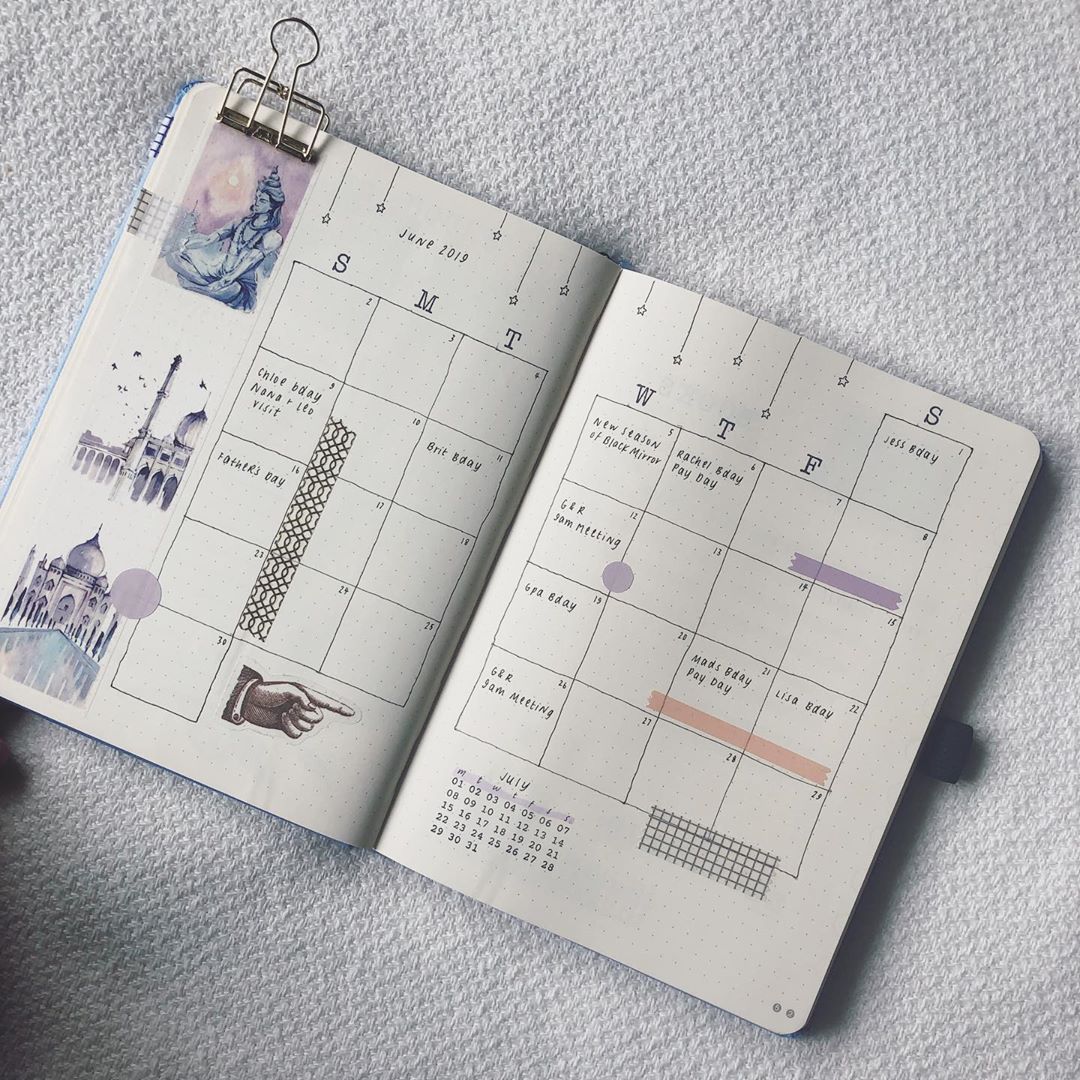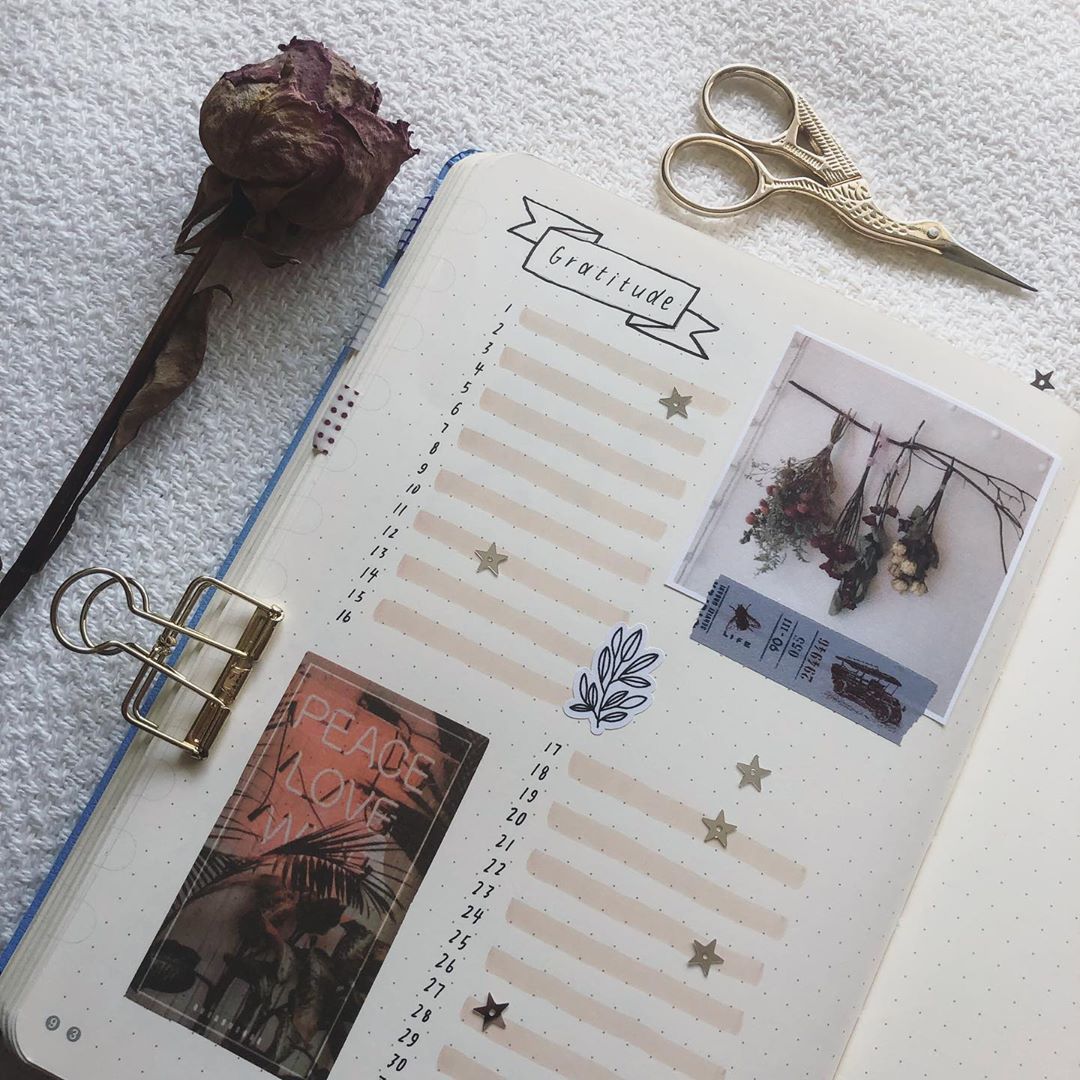Bullet Journaling for an Organized, Successful 2020
Use this DIY tool to meet your goals and finally get organized!
 Photo Credit: @Whiskeymug
Photo Credit: @Whiskeymug
Bullet Journaling is one of the best ways to set yourself up for a successful year. It’s all about staying organized and getting things accomplished! This unique DIY journaling trend was made to fit any type of task, reminder or appointment you might need to record in one place. Once you get going you can use creativity, stickers and your own style to track progress and keep goals front of mind. Many of us are accustomed to using preprinted planners or our phones to stay organized but those systems are usually restrictive requiring multiple apps or lugging around a huge planner. They’re not usually made to accommodate the variety of things that life throws our way. If you feel like you’re always trying to be more organized, then keep reading to see if bullet journaling is the right fit for you.
Created by Ryder Carroll, this journaling system consists of an index and a set of collections called: a future log, a monthly log and a daily log.
- The index is there to help remind you where each collection begins. You can number the pages of your journal so that flipping back and forth between pages and notes is effortless.
- A future log will show all 12 months of the year – a great place to track big events like vacations, holidays and birthdays.
- You can then start to create your monthly log – refer back to your future log and fill in any big events that are happening and update it as the month progresses with appointments, or things you don’t want to forget.
- A daily log is a place to make daily notes. Keep reading below to see how best to keep these daily notes organized.
 Photo Credit: @Whiskeymug
Photo Credit: @Whiskeymug
The term “rapid logging” is a systematic way to record your notes and reminders to save time. While typical note taking might look like a mess of checkboxes and crossed out words, using rapid logging can cut down on the number of words you need. You can use a customized key where a different marking means “task” and another means “event”. Instead of writing “- Go to the grocery store for milk” you can use your key for task and simply write “o buy milk”. This way you can look back at your list and only focus on the o’s to see what tasks you need to complete, rather than going back and re-reading every line you wrote earlier in the day or week.
Thanks to the internet, Bullet Journaling has gone far beyond Ryder’s original iteration of simple logs and many people enjoy adding an artistic flair to their journals. Whether it’s adding in photographs or stickers or some beautiful calligraphy, this style of journaling can also be a creative outlet. Whether you want your journal to help you track your workout progress over time, the amount of money you spend at Chipotle or the number of books you can read in a year – it’s a system that will be molded to your life.
![]() Photo Credit: @Whiskeymug on Instagram - Bullet Journal Tracking Books Read
Photo Credit: @Whiskeymug on Instagram - Bullet Journal Tracking Books Read
Madeline at @Whiskeymug on Instagram set her goal to read 100 books in 2019 and through the use of her bullet journal she had a place to track how many pages she read each day, to jot down notes about the books she was reading and a list to add the title to once she finished another book. This is the beauty of bullet journaling, your individual goals can be written on paper, you can create a checklist system that will help to keep you accountable and track however often helps ensure you are on track to meet your goal. As you check in, you will have a clear visual representation of whether you are on track to meet the goals you have set.
All you really need to have to start bullet journaling is a good pen and a good journal. The most highly recommended journal seems to be the Leuchtturm1917 notebook, it’s also the one Carroll recommends. There is also an official Bullet Journal you can purchase here - www.bulletjournal.com/products/notebook. A good pen is one that you can write with comfortably forever and that creates the look you desire in your journal. If you plan to do lots of drawing or to use thicker pens and makers, you may want to find a journal with thicker paper to avoid bleed through. Other common supplies of bullet journalers are stickers and washi tape. These are decorative pieces that can be used either as part of your checklists or as added visual appeal. For example, if you were to create a collection to track your water consumption, you can use a water bottle sticker every day that you drink 8 cups of water. A bullet journal is typically filled with dot grid paper which makes it easy to create clean lines, however you can also use washi tape to create separation in your collections or to adhere photos to your journal.

Photo Credit: @Whiskeymug
You can start with the basics that Ryder lays out or if you already know what you want to track you can create the journal to fit your needs. If you feel overwhelmed when starting, first of all, that’s completely normal! I would suggest starting with the basics of an index, a future and a monthly log. If you have a lot of appointments or want to be able to add things daily, then a weekly log would also be a good fit for you. You can create 6 squares on one page, assigning 1 day to each square (weekends can share a space!). You can divide your page using washi tape, a solid black line, a polka dotted line or whatever fits your style and needs. From here you can begin to explore other pages or “collections” as Ryder calls them. If you don’t need a monthly log or a weekly log then skip them!

Photo Credit: @Whiskeymug
If you’re ready to get started with a journal of your very own we recommend starting with Ryder Carroll’s How To Bullet Journal video. This way you can get a visual understanding of the basics. Once you’ve done that feel free to explore more on YouTube to find out the different styles everyone has and find inspiration of what you want to record in your journal.
Happy Journaling,

Symone Maruyama
Customer Experience Coordinator | Erin Baker's




